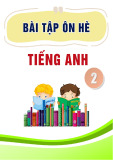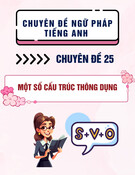
THEIMPACTOFVISUALTHINKINGSTRATEGY
21(1/,6+/18(0-25625/
&20081,&7,21352),&,(1&
1HQ7KLLHHQ
3KDQ7KLDP
(PDLOQHQWKLLHKHQQWHQ
Received:05/08/2024
Revised:17/02/2025
Accepted:26/02/2025
DOI:10.59266/houjs.2025.537
EVWDFWVisualThinkingStrategycanbecharacterizedasa“meta-visual-lingual”
endeavorinvolvingtheverbalarticulationofthoughtsprovokedbyavisualstimulus.The
attemptistoenhanceanindividual’scapacitytointerpret,describe,andanalyzeimageryby
engaginginactiveobservationandcollaborativediscussion.Thisstudyaimstoclarifyhow
LVDWKLQLQVWDWHLVHPSRHGLQVSHDLQHVVRQVWRVRHVWGHQWV(QLVKVSHDLQ
problems in university education. The sample included 70 English-majored students at
DongNaiTechnologyUniversity,comprising35rst-yearstudentsand35sophomores.The
examination of the questionnaireand semi-structured interviews indicated that activities
inspiredbyVisualThinkingeectivelypromotestudents’easeinspeakingsituations,thereby
resultinginimprovedpracticeandprociencyinEnglishspeakingability.Thissuggeststhat
VisualThinkingmayserveasaneectiveapproachtoprovidinguniversitystudentswithan
activelearningenvironment.Nonetheless,thenotionofvisualthinkingandthebenetsof
activitiesinspiredbyvisualthinkingarerelativelyunfamiliarconceptswithintherealmof
Englisheducation.Consequently,additionalstudiesarenecessarytocreatelessonplansthat
LQRSRDWHLVDWKLQLQVWDWHLHVRHDQHVRWKH(QLVKDQDH
.HRVEnglishspeakingability;Englishspeakingproblems;Visualthinkingstrategy.
FacultyofForeignLanguages,DongNaiTechnologyUniversity,BienHoaCity,Vietnam.
,,QWURGFWLRQ
Oral communication plays a vital
role in acquiring a language; however,
K FUUQ VFKRRO FUULFOP UTQO
overlooks the importance of developing
the skill (Kabellow et al., 2020). The
LVLQJJDSKDVORQPURVVQV
facingissuessuchasshyness,diminished
condence, and anxiety over judgment,
KLFK PD FRQULE R VDJ ULJK DQ
LPS KLU FDSDFL R ODUQ D VFRQ
languageeectively(Daymieletal.,2022).
In the absence of sucient opportunities
forspeakingpractice,studentsaredeprived
ofthechancetocultivateuencyandthe
QDUDO FRPPQLFDLRQ VNLOOV KD DU
crucialforeectivereal-worldinteractions.

In Vietnam, the attainment of
English speaking prociency has
LQFUDVLQJOJDUQUDQLRQURPPDQ
QUJUDDVRLVVVQLDOUROLQ
LQUQDLRQDO FRPPQLFDLRQ VKDS E
globalintegration.ProciencyinEnglish
VSDNLQJ VNLOOV KDV EFRP D SULPDU
objectiveinthetertiarycurriculumatmany
Vietnamese universities. Nonetheless,
conventional teaching approaches fall
short of equipping individuals with the
VVQLDO RROV DQ VROLRQV Q
to tackle existing deciencies. The
UDLLRQDO PKRRORJ PSKDVLV K
role of teachers, textbooks, and their
explanations,withstudentsanticipatedto
remain passive, listening attentively and
memorizingcontent.Thismethodpresents
multiple drawbacks, such as limited
independence, inadequate practical life
skills,and emotional turmoil.Therefore,
it is essential to incorporate innovative
PKRRORJLV LQR LVLQJ DFKLQJ
practicestoaddresstheseshortcomings.
Visual thinking strategy (VTS)
USUVQV D SURPLQQ DSSURDFK LKLQ
the realm of active learning styles.VTS
enableslearnerstoengagewithartworks,
fostering the development of essential
skillslikevisualliteracy,criticalthinking,
and communication abilities, including
listening and self-expression (Yenawine,
2013). Furthermore, numerous
investigations have been conducted
regardingtheecacyofVTS,suchasthe
QKDQFPQRFULLFDOKLQNLQJDELOLLV
in young children (O’Leary, 2010); the
LPSDF R976RQ ODUQUVLQ RUK DQ
fthgrades(Moelleretal.,2013);andthe
DSSOLFDLRQR976LQDFKLQJULLQJR
secondarystudents(Yeom,2018).
Nonetheless, the investigation into
K LPSDFV R976 RQ(QJOLVKVSDNLQJ
remains constrained, particularly within
thecontextofVietnam.Thisstudyseeks
toexploretheinnovativeVisualThinking
(VT) methodology and its potential
eectsontheEnglishoralprociencyand
ODUQLQJ DLV R UVKPQ D RQJ
NaiTechnologyUniversity(DNTU).This
LOO DVVLV(QJOLVK DFKUV LQ QKDQFLQJ
their teaching techniques and serve as a
UDPRUNRUDLLRQDOUVDUFKRFV
on advancing learners’ English speaking
skills.
,,/LWHUDWUH5HYLH
2.1. Students’ English speaking
problems
ThestudyconductedbyGan(2012)
DPLQ KFKDOOQJV VQVDFLQ
developing theirEnglish speakingskills.
It identied several issues, including
insucientvocabulary,anoverwhelming
emphasis on various grammatical
structures, and a lack of opportunities
RU VSDNLQJ (QJOLVK ERK LQ FODVVURRP
settings and outside environments.
Nevertheless, even during speaking
lessons, Sarmiento Alayon et al. (2023)
notedthatmanystudentsfrequentlyavoid
participatingactivelyduetoawidespread
DU R ELQJ J E KLU SUV DQ
instructors. The presence of anxiety
FRQULEVRDFODVVURRPDPRVSKUKD
SRVV JUDU FKDOOQJV DQ LPLQLVKV
the overall enjoyment for learners.
Furthermore, many learners occasionally
ODFN LDV UJDULQJ QDPLOLDUVSDNLQJ
topicsassignedtothem.Whenfacedwith
uncertainty,learnersoftenoptforsilence
or minimal participation. Consequently,
ODUQUV RUL VVQLDO FKDQFV R
QJDJ DQ QKDQF KLU ODQJDJ
abilities in a dynamic environment.
(FDRUV PV DUVV KLU VQV
emotional needs, preparing them for

PDQLQJO QJDJPQ LQ K UDO
world (Sarmiento Alayon et al., 2023).
(FDRUV FDQ QUU FRPPQLFDLRQ
skills and empathy in the classroom,
creating a supportive environment that
encourages opendialogue,collaboration,
andindividualgrowth.
2.2.Visualthinkingstrategies
Fernández-Fontecha et al. (2018)
FKDUDFUL 97 DV D PKRRORJ
PSKDVLLQJ K UODLRQVKLS EQ
visualperceptionandcognitiveprocesses.
Thisapproachemploysarangeofvisual
components,includingimages,colors,and
lines,eachcarryingsignicantmeanings
that necessitate cognitive engagement
forpropercomprehension.Similarly,Liu
(2022) emphasizes that incorporating
visuals facilitates the connection
EQ DEVUDF FRQFSV DQ FRQFU
representations,fosteringamoreintuitive
and engaging learning atmosphere.
This approach fosters an environment
where students can investigate various
viewpoints and articulate their ideas
visually, thus enhancing self-expression
andteamworkwithintheclassroom.
VTS serves as a student-centered
teachingmethod,necessitatingactiveand
cooperative participation from learners
in the classroom (Cappello & Walker,
2016).Studentsmustengageactivelyby
FKDQJLQJ KLU KRJKV R DVVLV DFK
RKU LQ DFTLULQJ JUDU NQROJ
within the classroom (Hess, Young, &
Arbogast,2019).
976 FRQVLVV R RU LVLQF
components. Yenawine (2013) identies
these components as viewing artworks,
answering questions, engaging in
discussion, and concluding the lesson
with the teacher.These components can
be applied in numerous ways, tailored
RK VEFV RU VNLOOV FDRUVDLP R
enhance.Forinstance,VTScanenhance
listeningskills,visualliteracy,reasoning,
andcommunication.
Moeller et al. (2013) indicate
KD K PKR DFLOLDV ODUQUV LQ
JQUDLQJQLDVLKJUDUURP
and independence.Additionally,Campos
(2018) asserted that using pictures and
photographsallowslearnerstocreatively
andcriticallythinkaboutbar,line,circle,
andgraphicgraphs.
3HLRVVWLHV
Numerous investigations have
EQFDUULRLQKFRQRULLQJ
classroomsrelatedtolanguageinstruction.
Yeom(2018)utilizedimagesfrompicture
ERRNV R QKDQF K ULLQJ VNLOOV
of Korean secondary EFL learners. The
V VEFV FRPSULV RUDQ (
secondarylearners,andthemethodologies
employed included interviews, group
discussions,andawritingassessment.The
ndingsindicatedthattheparticipantsfelt
capableofreasoningthroughvisualcues.
Furthermore,theparticipantssuccessfully
DVVPEO K FROOFLRQ R LPDJV DQ
articulated their ideas in English. In
Thailand, Saengmontri (2015) examined
K QKDQFPQ R (QJOLVK VSDNLQJ
and creative writing skills among 11th-
grade students using VTS. A group of
thirty participants, consisting of 11th-
grade students, underwent instruction
for 22 hours. The ndings demonstrated
that instruction on VTS was eective
and suitable for learners with varying
knowledge and abilities. Consequently,
the learners’speakingskillsandcreative
ULLQJ FDSDELOLLV P K VDEOLVK
standards.

,,,5HVHDUFPHWRGRORJ
5HVHDFKHVLQ
7K DSSURDFK LQJUD ERK
quantitative and qualitative methods of
data collection. The quantitative data
FRPSULV UVSRQVV JDKU URP K
questionnaires. The qualitative data
was derived from the semi-structured
interview.Thisstudyinvolvedacohortof
VQV PDRULQJLQ (QJOLVK DRQJ
NaiTechnologyUniversity.Thedurationof
thisstudywasveweeks.Theparticipants
in both groups received instruction in
(QJOLVKVSDNLQJKURJKOVVRQSODQVKD
utilizedVTSasafoundationalapproach.
During the last week, participants were
UTV R FRPSO D TVLRQQDLU R
DVVVVKLUDLVUJDULQJVLQJ976
to improve speaking skills. Ultimately,
ve participants from each group were
requestedtoparticipateininterviews.
7K UVDUFKU FUD (QJOLVK
VSDNLQJOVVRQVRDFKVSDNLQJDELOLE
usingVTS.Yenawine’s(2013)components
R 976 U PSOR DV UDPRUNV
to design the lesson plan. To specify, the
teachingprocesswasdividedintofoursteps
ofVTS.Thedetailsareasfollows.
Step1-Thestudentsviewvisualaids.
Atthebeginningofthelesson,the
DFKU LVSODV D FKRVQ LPDJ RU K
students,givingthemamomenttoobserve
itbeforeencouragingtheirresponses.
6S7KVQVDQVUTVLRQV
relatedtothevisualaid,andteachersguide
theanswers.
7K DFKU KDV R VVQLDO
responsibilities: a) to pose the three
specic questions of VTS and b) to
engagewiththestudents’comments.The
followingarethethreespecicquestions:
i)Whatisgoingoninthepicture?
7KLV LQTLU DVVLVV K VQV LQ
QUVDQLQJ K QDPLFV LKLQ K
visualaids.Theresponsescanencompass
arangeofelements:hues,emotions,and
data.Thisinquirypromptsthestudentsto
embracetheroleofnarrators.
ii)Whatdoyouseethatmakesyou
saythat?
7KLV LQTLU SURPSV K VQV R
seek out evidence that substantiates their
observations.Thisinquiryencouragesthem
toengageinafact-basedandlogicalmanner.
iii)Whatmorecanwend?
7KLVLQTLUQFRUDJVKVQV
todelvedeeperintotheintricaciesofthe
artwork.
6S 7K VQV SDULFLSD LQ
groupactivities.
These three questions invigorate
classroom discussions, facilitating skill
enhancementforthestudents.Theteacher
PEUDFVDOOKVQVEDFNLKR
ELDVDQPSKDVLVKLUKRJKSURFVVV
rather thantheir errors.Thestudents can
cultivatevariousconceptsfromthevisual
aids as they engage in a progressive
examinationanddialogueaboutthem.
6S 7K DFKU FRQFOV K
lesson.
Theteacheroughttoshareaspecic
experiencetheyhaveencountered,inspire
the students to view visual aids as an
RQJRLQJDQ OLPLOVV SUVL DQUUDLQ
from oering summaries. Additionally,
L LV VVQLDO R FRQQF K ODUQUV
FRQULELRQV KURJKR R LOOVUD K
evolutionofthediscussion.
DWDFROOHFWLRQWRROV
4HVWLRQQDLH
Table1.0HDQVRHV/HH
0HDQVFRUHV/HYHO
1-1.8 Verynegative
1.8-2.6 Negative
2.6-3.4 Average
3.4-4.2 Positive
4.2-5 Verypositive

TVLRQQDLU DV VLJQ R
DPLQ K ODUQUV DLV RDU
using VTS in speaking classes. The
TVLRQQDLU LQFO VDPQV
RU SDULFLSDQV R UVSRQ R VLQJ D
5-pointLikertscale:5=stronglyagree;
4 =Agree; 3 = Neutral; 2 = Disagree;
and1 = strongly disagree.Thelevel of
learners’attitudeswasdenedusingthe
criteriabasedonPimentel(2019).Then,
K FROOF DD U DQDO VLQJ
SPSSStatistics.
3.2.2.Semi-structuredinterview
Semi-structured interviews were
LOLR QUVDQ K DLV R K
learnersmoredeeply.Forthisinvestigation,
interviews were conducted with ve
volunteerlearnersfromeachgroup.
,9)LQGLQJVDQGGLVFVVLRQ
4HVWLRQQDLH
Meanscoresandstandarddeviationswereanalyzedinthedatafromthequestionnaire.
7KUVOVDUVKRQLQ7DEO
Table2.Students’perceptionsofVTS
1R ,WHPV Q 0 6 /HYHO
VTSboostsmylearningengagement. 4.34 0.796 VeryPositive
VTSencouragesmetoexpressmythoughts,thereby
promotingself-expression.
3.96 1.233 Positive
VT-inspiredactivitiesaresuitableformycompetence. 3.94 1.048 Positive
VTSincreasesmyEnglishuency,therebyboostingmy
condenceinspeaking.
3.21 1.166 Average
VTSrequiresmetobeactiveandcooperativeintheclassroom. 4.07 1.121 Positive
VTSinspiresdiscussionsincriticalways. 4.16 0.973 Positive
VTShelpsmeorganizeandpresentinformationmorecreatively. 3.01 1.245 Average
VTSmakeslearningmorememorable. 3.99 1.186 Positive
Theteacheracceptsalllearners’commentswithoutjudgment. 3.99 1.28 Positive
VT-inspiredactivitiesshouldbeincorporatedmoreinspeaking
lessons.
4.24 0.842 VeryPositive
7RWDO 3RVLWLYH
7K VQV DLV RDU
learningtospeakthroughVTSwerevery
positive, as shown by the highest mean
scores:4.34foritem1and4.24foritem10.
7KV VKRKDKVQV RQ976
UPO QJDJLQJ DQ O QFRUDJ
enough to get involved in their own
learning. VTS can eectively promote
students’ ease in speaking situations,
KUE UVOLQJ LQ D LOOLQJQVV R
practicefrequentlyinthefuture.
Item2,item3,item5,item6,item
8,anditem9recordedthesecond-highest
meanscoresfrom3.94to4.16.Theyshow
thatstudents’attitudeswerepositive,with
benetsbroughtoutbyVTS.Tobespecic,
VTSoerschancestocommunicateideas,
KUEQFRUDJLQJVOSUVVLRQ976
FDOOVRUOOSDULFLSDLRQDQFRRSUDLRQ
LQ K FODVVURRP 976 KOSV VQV
interactmorefullywiththecontent,aiding
comprehension and memory. Moreover,
the students found the visual thinking-
inspiredactivitiessuitablefortheirlevels,
and the teacher received all students’
commentswithoutjudgment.
Although two statements received
K ORV VFRUV FRPSDU R RKU

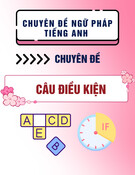

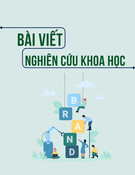
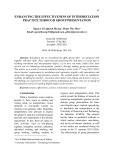

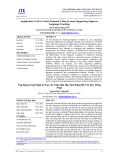

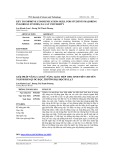
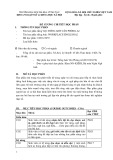
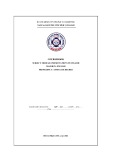
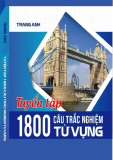
![Tài liệu Từ vựng tiếng Anh Trung cấp [mới nhất]](https://cdn.tailieu.vn/images/document/thumbnail/2025/20250913/nguyentuan250421@gmail.com/135x160/99491757910839.jpg)
![Tài liệu Từ vựng Tiếng Anh theo chủ đề [mới nhất]](https://cdn.tailieu.vn/images/document/thumbnail/2025/20250913/namdhuet@gmail.com/135x160/83251757753810.jpg)


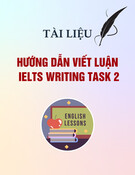
![Tài liệu Từ vựng tiếng Anh cho bé [chuẩn nhất/mới nhất]](https://cdn.tailieu.vn/images/document/thumbnail/2025/20250731/huadaithesang2509@gmail.com/135x160/18631754013896.jpg)





